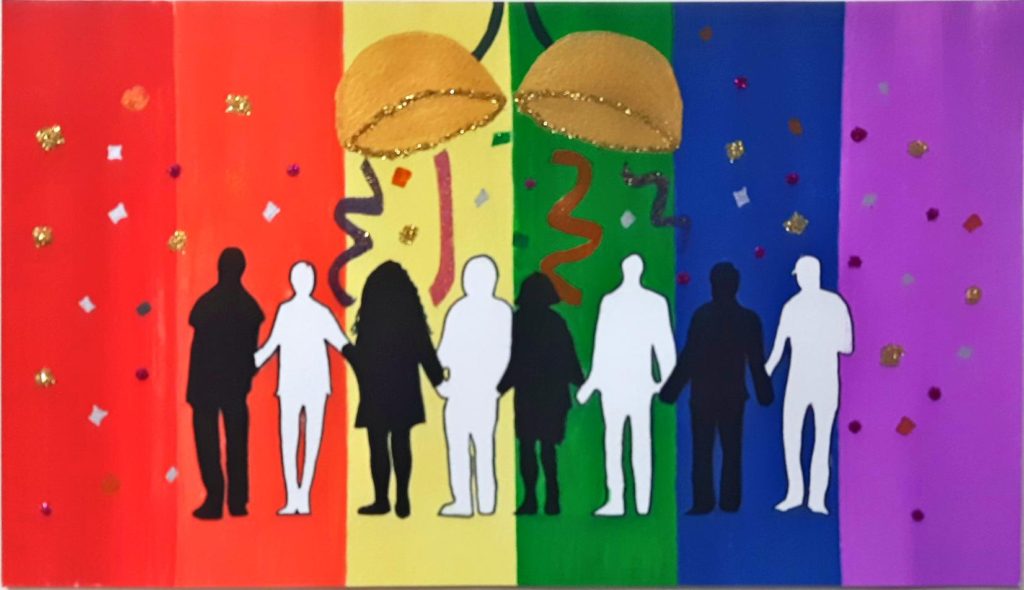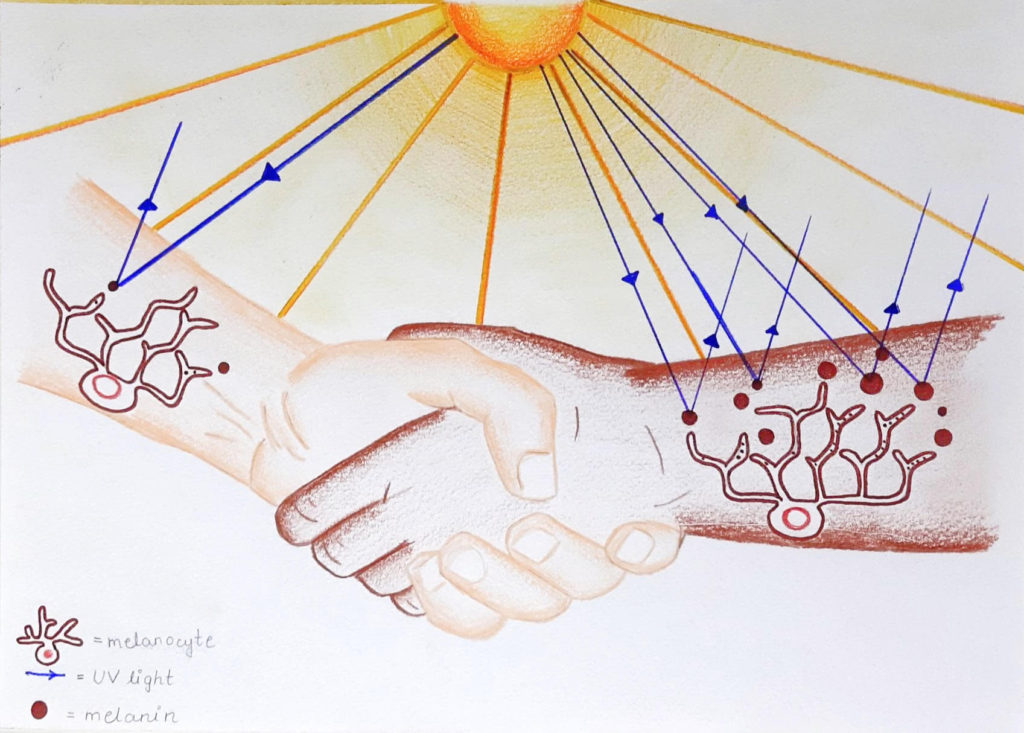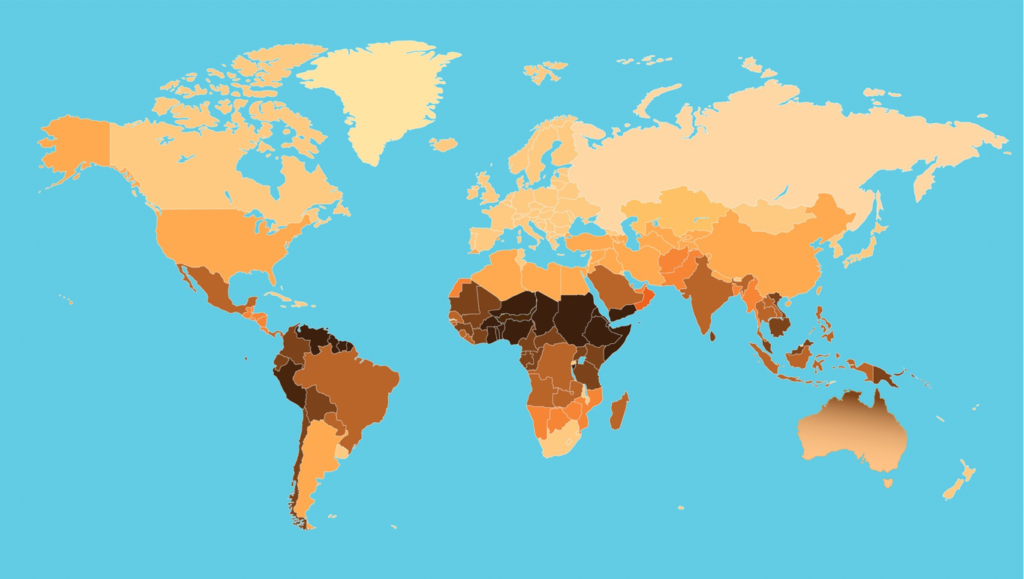Today, in most parts of the world and especially in some developed countries, we can observe the existence of systematic racism. Discrimination on the basis of skin colour, i.e., distinguishing people as inferior or superior based on their race, is a global issue.
Why?
Because we all are very negligent about the history of humans as a species.

Around 6 million years ago, our last common ancestor split into two branches giving rise to two separate genera. One was Homo (Humans) and the other Pan (Chimpanzee). Since then, our genus, Homo, evolved and was present all over the continent of Africa. Around 200,000 years ago, we — modern humans (Homo sapiens) — arose in the heart of Africa. This was the time when other humans like Neanderthals and Homo erectus co-existed with modern humans but modern humans were the most intellectually evolved of them all.
Most of Africa lies in the equatorial and tropical region. This region gets the highest amount of ultraviolet (UV) rays from the sun. As we go from the equator to the poles, the amount of UV rays decreases. The rays are very harmful to human skin. Exposure to them increases the risk of developing a type of cancer called melanoma.
So how did our early ancestors survive?
Our skin consists of a type of cells called melanocytes in the epidermis and hair follicles. When our skin is exposed to UV rays, these cells get triggered to form a pigment called melanin which is brown in colour. Melanin has the ability to absorb and dissipate most of the UV rays, thus preventing it from penetrating our skin epidermis. Due to this, only an insignificant amount of UV penetrates the epidermis. Thus, our ancestors in Africa had a high amount of melanin which shielded them from the harmful UV rays. Since this melanin is brown, higher accumulation of it leads to darker skin colour. Hence, our ancestors were, what a racist would call, “Black”.
Over the years as the population grew, a fraction of it started migrating towards the north. Soon after a few years, modern humans occupied all the continents except Antarctica. Neanderthals and Homo habilis went extinct (Spoiler alert: We might be one of the reasons for their extinction. No surprises there. Extinction is something we are extremely good at.)

But here’s a twist! UV rays are not completely harmful to us. In fact, a small amount of them is necessary for our body to synthesize Vitamin D. Vitamin D helps our body to absorb calcium, which is a very important element that helps in maintaining muscle movements, in carrying messages to the brain through nerves, and in preserving hard bones and strong teeth. As we learned before, the amount of UV rays received by the earth’s surface decreases as we go away from the equator. And so, UV exposure lowered for the humans who started migrating north. As a result, the amount of UV penetrating the epidermis was not enough to synthesize vitamin D that is necessary to absorb calcium. This could potentially imbalance the human physiology and so it would have limited humans only to the tropics!
“Rome was not built in one day”, could have been, “Rome? Where’s that?”
Mother nature finds its way to help its babies to nurture and adapt. Natural selection came to the rescue again! Migration exposed humans to certain local environmental stress (selective pressures) which, along with random drift, resulted in genetic variants. In simple language, external (environmental) change drove internal (biological) change. Thus, this change resulted in a continuous gradient of light to dark skin colour in humans. In higher latitudes, the population with lighter skin got naturally selected to the environmental conditions. Hence, populations in higher latitudes, north and south of the equator, have lighter skin. This balanced out the net intake of UV rays perfectly to cook Vitamin D. Nature knows its recipe, doesn’t it? This resulted in comparatively light-skinned humans. Consequently, we observe this trend of light-skinned in temperate regions of the earth and medium to dark-skinned people in the tropics.

So, at some point in time, we were all “Black” and African! It’s funny when a dark-skinned person in America is referred to as African-American even if he was born in America. The truth is we all are Africans! I am African-Indian, some of my friends are African-Dutch or African- Australian and so on. This distinction of black-white is baseless.
Do you know, those aren’t even true colours?! They are shades! Black is the absence of light whereas white comprises of all the hues on the visible light spectrum. Instead of celebrating being white, we should celebrate each colour that lies within the white – Rainbow, a symbol of LGBTQ+ pride (hot pink for sex, red for life, orange for healing, yellow for sunlight, green for nature, turquoise for art, indigo for harmony, and violet for spirit).
Now racism sounds stupid, right? I have got a new definition for racism: delusion and chaos due to utter ignorance, denial and a good amount of absurdity.
Author:

Rohit Pawar
Rohit is an ecologist who recently graduated with a bachelor’s degree in Biosciences from Savitribai Phule Pune University. He wishes to devote his life to ecosystem conservation. In his free time, he worries and overthinks about the biggest problems in the world, especially climate change. He thinks that we are 4 Elon Musks away from saving this planet.
Illustrator:


Wow! This is intriguing and providing an amazing insight into the biology of Human skin colour. This article is perfect to explain why racism is unnecessary, because after all, we are one! Well articulated, and the illustration is commendable, too!
Very well written. Keep it up!
Really an interesting article full of facts .Though the words are simple but the article is really impactful and should reach to every one in the society. Illustration is also good ,neat ,simple and the concept of melanin is getting expressed well. Keep it up & all the best!!